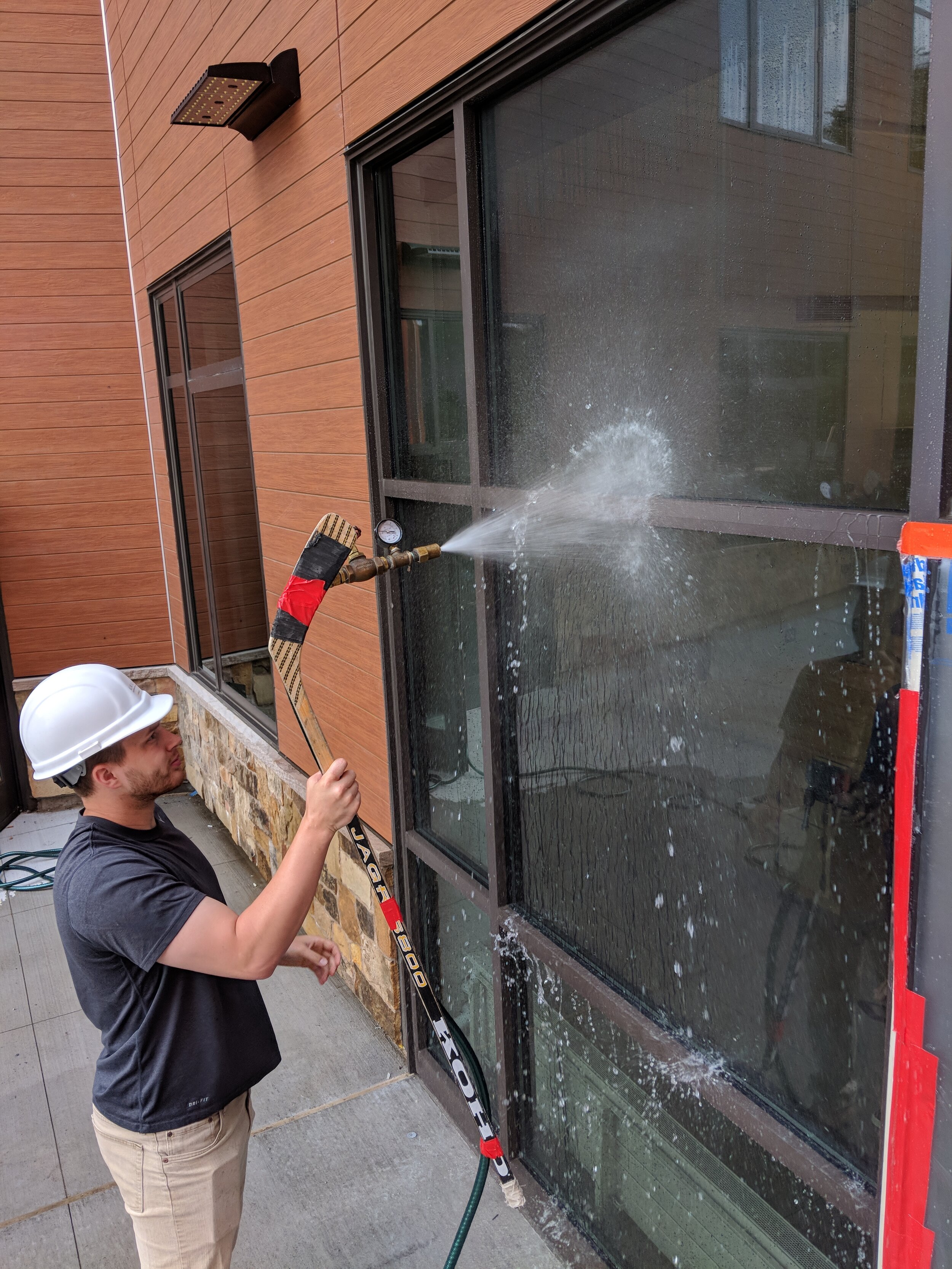By GRLA Building Envelope Sciences Assistant Project Manager, Ty Spencer
It is often said that there are two types of windows:
Windows that leak.
Windows that will leak.
Unfortunately, the reality of this saying is true. Some windows that are brand new and newly installed will leak right away, while others eventually leak over time. If we are not careful, windows are certain to fail sooner than anticipated.
Ty Spencer, Assistant Project Manager
So how do we catch window leaks? As building envelope engineers, we can:
Perform testing to make sure the new window is installed properly and has no defects.
Design details during the design phase, anticipating the fact the windows will leak and detail the window opening accordingly.
Window testing is a major part of the work our 6-person Building Envelope Sciences team here at GRLA does. We perform both water testing and air testing to ensure the quality of the design and installation. (News flash: windows can leak air too!).
Water testing and air testing according to ASTM & AAMA standards is an integral part of our building envelope consulting and building envelope commissioning work that gives us instant feedback.
The main types of window testing we perform are:
ASTM E 1105: “Standard Test Method for Field Determination of Water Penetration of Installed Exterior Windows, Skylights, Doors, and Curtain Walls, by Uniform or Cyclic Static Air Pressure Difference”,
AAMA 501.2: “Quality Assurance and Diagnostic Water Leakage Field Check of Installed Storefronts, Curtain Walls, and Sloped Glazing Systems”, and
ASTM E 783: “Standard Test Method for Field Measurement of Air Leakage Through Installed Exterior Windows and Doors”
Nima Mansour, Project Manager
Our team for testing is led by Nima Mansour, who has over 27 years of experience between Thompson & Lichtner, and here at GRLA as a project manager. Together, Nima and I have tested hundreds of windows. And believe it or not, even when newly installed, not all windows pass right away.
Window testing can catch these troublesome leaks before they become a bigger and much more expensive issue to solve! Together with proper design detailing, a little work now can protect your building investment for many years to come.




